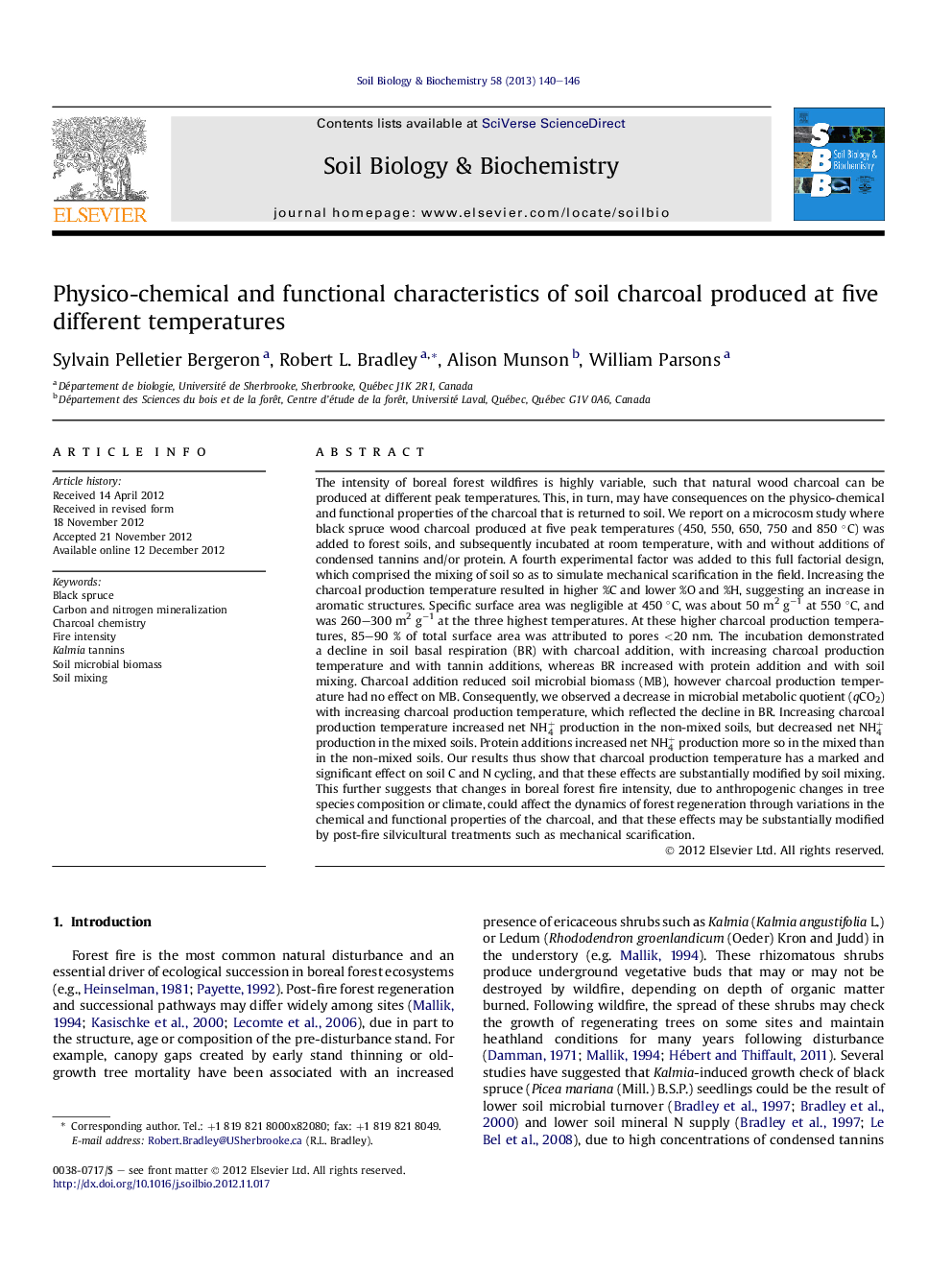| Article ID | Journal | Published Year | Pages | File Type |
|---|---|---|---|---|
| 2024879 | Soil Biology and Biochemistry | 2013 | 7 Pages |
The intensity of boreal forest wildfires is highly variable, such that natural wood charcoal can be produced at different peak temperatures. This, in turn, may have consequences on the physico-chemical and functional properties of the charcoal that is returned to soil. We report on a microcosm study where black spruce wood charcoal produced at five peak temperatures (450, 550, 650, 750 and 850 °C) was added to forest soils, and subsequently incubated at room temperature, with and without additions of condensed tannins and/or protein. A fourth experimental factor was added to this full factorial design, which comprised the mixing of soil so as to simulate mechanical scarification in the field. Increasing the charcoal production temperature resulted in higher %C and lower %O and %H, suggesting an increase in aromatic structures. Specific surface area was negligible at 450 °C, was about 50 m2 g−1 at 550 °C, and was 260–300 m2 g−1 at the three highest temperatures. At these higher charcoal production temperatures, 85–90 % of total surface area was attributed to pores <20 nm. The incubation demonstrated a decline in soil basal respiration (BR) with charcoal addition, with increasing charcoal production temperature and with tannin additions, whereas BR increased with protein addition and with soil mixing. Charcoal addition reduced soil microbial biomass (MB), however charcoal production temperature had no effect on MB. Consequently, we observed a decrease in microbial metabolic quotient (qCO2) with increasing charcoal production temperature, which reflected the decline in BR. Increasing charcoal production temperature increased net NH4+ production in the non-mixed soils, but decreased net NH4+ production in the mixed soils. Protein additions increased net NH4+ production more so in the mixed than in the non-mixed soils. Our results thus show that charcoal production temperature has a marked and significant effect on soil C and N cycling, and that these effects are substantially modified by soil mixing. This further suggests that changes in boreal forest fire intensity, due to anthropogenic changes in tree species composition or climate, could affect the dynamics of forest regeneration through variations in the chemical and functional properties of the charcoal, and that these effects may be substantially modified by post-fire silvicultural treatments such as mechanical scarification.
► The intensity of forest wildfires is variable and may affect charcoal properties. ► Charcoal was produced at 5 peak temperatures and added to forest soil. ► Other experimental factors were tannin and/or protein addition and soil mixing. ► Production temperature affected charcoal properties and soil C & N cycling. ► Wildfire intensity could affect soil nutrient dynamics of regenerating forests.
